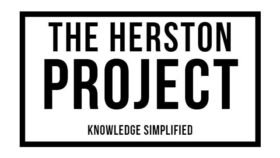How to Know a Person is a thoughtful and insightful book that offers valuable advice for anyone who wants to build stronger relationships with others. Brooks’ message is clear: we can all learn to see each other more deeply and connect with others on a more meaningful level.
Quick read points
How to Know a Person covers the following key topics:
- Deep attention: The ability to engage with another person with unwavering focus and curiosity.
- Vulnerability: Sharing our imperfections and insecurities to foster genuine connection.
- Moral imagination: Stepping into another person’s shoes and experiencing the world through their eyes.
- Storytelling: Listening to another person’s story to gain a deeper understanding of their identity.
- Being seen: The importance of being known and understood, to feel that our authentic selves are valued and appreciated.
- The importance of understanding the forces that have shaped another person’s life, including their family, culture, and experiences.
- The value of forgiveness in building strong relationships.
- The importance of cultivating humility and recognizing our own limitations.
- The power of hope in creating positive change in the world.
Long read
In David Brooks’s insightful book “How to Know a Person,” he expounds on the transformative power of genuine human connection. By cultivating “deep attention,” sharing our vulnerabilities, and employing “moral imagination,” we can bridge divides, foster empathy, and create a world where meaningful connections thrive.
Drawing from a rich tapestry of perspectives, including psychology, neuroscience, philosophy, theatre, history, and education, Brooks guides readers on a journey of self-discovery and empathy, illuminating the transformative power of genuine human connection.
Central to Brooks’s exploration is the concept of “deep attention,” a practice of engaging with another person with unwavering focus and curiosity. He emphasises the importance of observing verbal and nonverbal cues, listening attentively, and suspending judgment to grasp the essence of another’s being.
Through this deep attention, Brooks argues, we can begin to understand the unique narrative that shapes each individual’s life, their hopes, fears, and motivations.
Brooks also highlights the significance of vulnerability in fostering deep connections. He encourages readers to embrace their own imperfections and insecurities, recognizing that these aspects of our humanity are not weaknesses but rather doorways to understanding and compassion. By sharing our vulnerabilities, we open ourselves to the possibility of genuine connection, allowing others to see us in our entirety.
To further enhance our ability to connect with others, Brooks introduces the concept of “moral imagination,” the capacity to step into another person’s shoes and experience the world through their eyes. He encourages us to consider the forces that have shaped their lives, the challenges they have faced, and the values they hold dear. By engaging in moral imagination, we can break down barriers of prejudice and misunderstanding, fostering empathy and appreciation for the diversity of human experience.
Brooks also explores the importance of storytelling in understanding others. He emphasises that our personal narratives, shaped by our experiences and beliefs, provide invaluable insights into our motivations and our place in the world. By actively listening to another person’s story, we can gain a deeper understanding of their identity and the forces that have shaped their journey.
In addition to exploring the art of seeing others deeply, Brooks also addresses the importance of being seen in return. He suggests that we all yearn to be known and understood, to feel that our authentic selves are valued and appreciated. By extending genuine care and attention to others, we create a space where they feel seen and heard, fostering a sense of connection and mutual respect.
Brooks concludes his insightful exploration by emphasising the transformative power of deep human connection. He argues that the ability to truly see and understand others is not only essential for meaningful relationships but also vital for building a more cohesive and compassionate society. By cultivating deep attention, embracing vulnerability, engaging in moral imagination, and actively listening to others’ stories, we can bridge divides, foster empathy, and create a world where genuine connection thrives.

